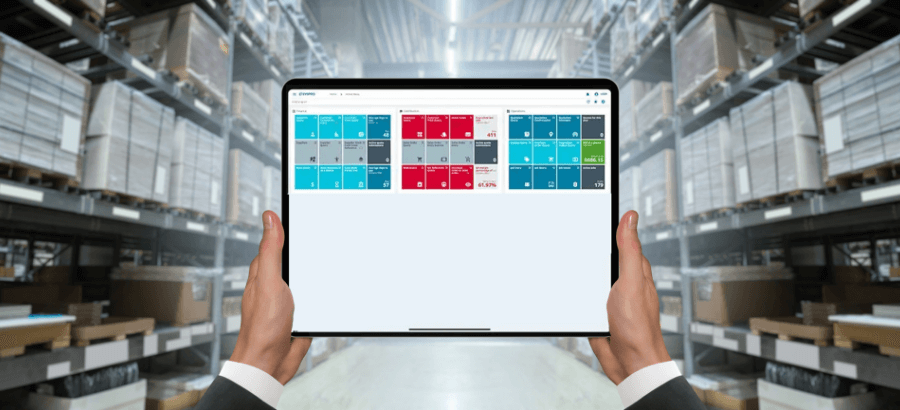Disruptions like the pandemic, supply shortages, global trade barriers, high customer expectations and inflation all add tremendous pressure on the procurement process. As manufacturers strive to reduce costs while increasing speed, the process of procuring materials, making products, and moving them where they need to be is more complex than ever. According to SYSPRO Research 70% of manufacturing businesses experienced material handling and supply chain disruptions during the pandemic. Despite this, only 33% of businesses invested in procurement and sourcing technologies. Further to that, only 18% of businesses invested in technologies to improve external collaboration with suppliers.
Companies that have recognized the role of technology in transforming their business models have been the ones that have been able to thrive. Organizations should increase visibility and information sharing through collaborative technologies like ERP to optimize procurement within the supply chain for improved business processes and decision-making.
Here’s how manufacturers can use ERP to increase their competitive advantage and optimize their procurement capabilities:
1. Using ERP to improve purchasing transparency
Purchases that are made outside the defined procurement process fall under dark purchasing. This may happen if someone with purchasing authority neglects to submit expenses properly. Such uncontrolled spending can ultimately be expensive for the business. When items purchased cannot be justified using capital outlay or material inventory, the resulting loss of revenue and control is a significant challenge for the organization.
ERP enables manufacturers with the control and traceability to set limits and prevent overspending. Through an Accounts Payable (AP) system requisitions can be automatically routed to relevant managers. AI within the ERP also detects anomalies, mitigating the risk of fraudulent activities.
2. Leverage ERP to enhance supplier collaboration to meet supply and demand
One of the challenges manufacturers face is the effective management of their suppliers. This is due to a complicated process which involves finding the correct supplier and then being able to track the vendor’s output while also ensuring the supply of goods is both consistent and high quality to meet demand. With continuous supply chain disruptions, manufacturers need procurement strategies that consider uncertainty. By closely studying the market you can identify new vendors to meet your company’s needs, cut costs or operate efficiently.
A 360-degree view of the business offered by an ERP system gives manufacturers that visibility into details about how and where their own inventory and work-in-progress jobs are located and can also alert you as soon as disruption is imminent. Visibility also allows you to find secondary suppliers as alternatives to obtain materials if your primary sources are a risk or experience shortages or delays. With back-up suppliers or more vendors in your supply chain you can optimize your production levels.
ERP offers businesses capabilities such as self-service supplier portals which allow your vendors to check orders, payments and make it easier to collaborate on one system. Also, electronic Requests for Proposals (RFPs) let suppliers respond to changing needs more quickly and can help set supply chain expectations. Manufacturers can use ERP to regulate supply agreements and implement policies by automating the selection of suppliers in the procurement process. The self-service within the ERP also means suppliers can be onboarded quickly as the process is streamlined, document handing is minimized, and transparency and government is improved.
3. Data-driven decision making with ERP as a single source of the truth
When manufacturers use real-time data and reporting features of an ERP system, they get access to relevant and accurate data that allows decision-makers to keep better track of the movement of products and they can use this data to improve operational efficiencies. Data within an ERP system can be fed into digital systems and tools like AI to predict potential disruptions and help the procurement team understand trends and forecasts. These insights improve customer satisfaction, reduce costs, and assist in managing supplier inventory levels and product delivery.
A properly managed procurement function allows manufacturers to stay attuned to the supplier network and adapt to ever-evolving customer demands. Unfortunately, some companies typically have outdated systems that do not allow them to collaborate and ready themselves for adaptation. An ERP system has become critical to making procurement an efficient process, allowing for future scalability while remaining agile in an environment defined by uncertainty.







